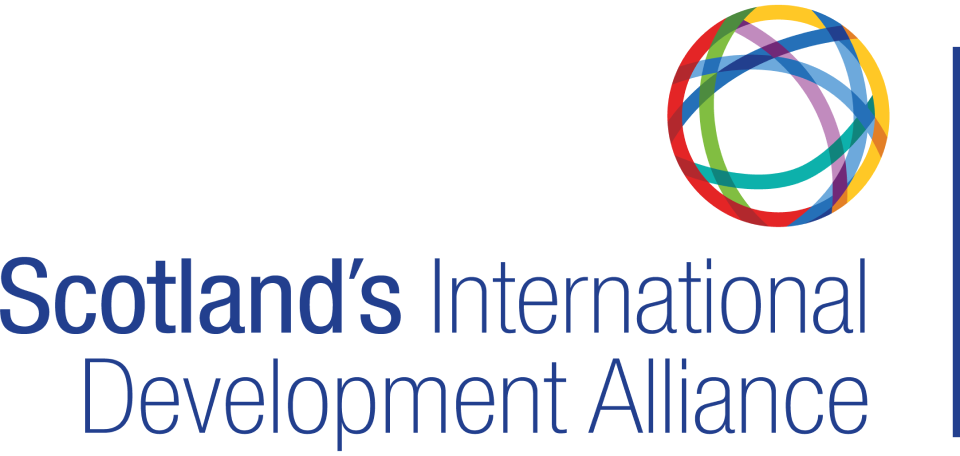Originally published in the 2019 winter edition of The Geographer, below we outline why we think Goal 17 is central to the achieving the SDGs, how Scotland is doing and what more needs to be done.
On Thursday 16 January 2020, MSPs debated the Oxfam-UWS Report ‘On Target for 2030?‘, an independent snapshot review of Scotland’s progress against the UN Sustainable Development Goals, for which the Alliance authored the chapter on Goal 17. Why, we hear you ask, is Goal 17 so important?
In this globalised age, it is impossible to ignore the fact that our actions here and now have a profound effect on people and planet, elsewhere and into the future. No longer can we allow ourselves to be limited by tunnel vision or myopia as we attempt to solve global problems. Working together, sharing ideas and fostering innovation at all levels of society is essential for creating a sustainable future. These are the principles of SDG 17 ‘Partnership for the Goals’, and are arguably at the centre of the whole 2030 Agenda.
Key to this is creating the space for partnership and cooperation, both physical and virtual. Examples include partnerships between schools in different countries, North-South and South-South civil society partnerships and networks linking the public, private and civil society sectors. At a geo-political scale, it is also about ensuring richer countries and regions do their bit to help achieve sustainable development outcomes in poorer countries and regions through development financing, policy coherence, and technology transfer.
As a devolved administration, the Scottish Government is limited as to how much progress it can make against many targets under Goal 17. This is due to the fact many of these relate to reserved powers currently residing at UK level, such as overall aid and development finance, global governance and international trade. Nonetheless, Scotland can – in a wider societal sense – contribute meaningfully across a number of areas, particularly in leading by example as a good global citizen.
Take trade and investment (SDG 17.10 and 17.12) for example. Power to change the rules lie outwith the remit of the Scottish Government, but through a joined up approach by public, private and civil society actors, we can present a united front and actively promote fairer rules to other national governments. We can also adopt procurement policies that take human and environmental impact into consideration, and publicly call ourselves out when supply chains and investment strategies undermine sustainable development elsewhere.
This is about policy coherence (SDG target 17.14), a concept that underpins the entire 2030 Agenda. It asks decision-makers across all sectors to look at the economic, social, governance and environmental aspects of sustainable development holistically, balancing tensions and competing agendas wherever possible.
This is a bit like solving a Rubik’s cube – If we try to solve only one side of the cube we are unlikely to ever succeed, but by considering all sides simultaneously we can get closer to the solution. Scotland often talks the talk on this issue politically, but can do much more.
Some work has been undertaken on specific thematic areas that reinforce Scotland’s international development work, such as on climate and global citizenship education, but this work is not systematic, and although promising, only touches the iceberg in terms of ensuring better policy coherence for sustainable development.
To be more joined up, we need leadership from the Government in a number of areas. We need to measure our global footprint holistically. As indicators are developed that aim to measure progress on our ‘positive contribution internationally’ in the National Performance Framework (NPF), we must ensure they go some way to measuring coherence in relation to our global footprint across a full range of sectors, as well as international development specific measures. By doing so, the NPF could be a rigorous monitoring and reporting system that screens our domestic and international actions against sustainable development outcomes at home and abroad.
The Scottish Parliament also has a role to play in ensuring that all new legislation and policy is scrutinised independently through a ‘sustainable development’ lens. Doing this requires consideration of any given intervention’s transboundary and transgenerational effects – intended and unintended. At a minimum, ‘proofing’ all legislation or policy through systematic scrutiny in this way would allow the Parliament to formally recognise any trade-offs that might exist between, say, economic development here and environmental degradation elsewhere. Recently, the Parliament developed a Sustainable Development Impact Assessment (SDIA) tool, but this is not yet used systematically nor comprehensively; resources must be put in place to ensure this is done.
But we must also recognise that whilst our Government and Parliament have a central and catalytic role in enhancing coherence and ensuring that space for partnership and cooperation exists; all sectors of our society – particularly our private sector – must take responsibility for acknowledging trade-offs, balancing inherent tensions and finding synergies within and between different parts of the 2030 agenda. Profit must not continue to trump other priorities.
Ultimately, as we attempt to solve global problems, an open and transparent approach to idea creation remains vital to encourage the multi-stakeholder and cross-sector buy-in that is necessary for holistic, whole-of-society action towards achieving the SDGs.


